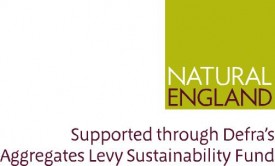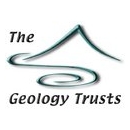Collaborative projects run by The Geology Trusts include:
Managing & promoting aggregate Local Geological Sites (2009 – 2010)
This project contributed to the ongoing review by our member counties of their Local Geological Sites and allowed us to expand the data held to include soil descriptions. Following a 3-day training course, personnel across seven counties carried out a field assessment of the current condition of 160 aggregate sites, together with a review of any Quaternary features present and the collection of soils data. Against all odds, with fieldwork severely interrupted by the nationwide snowfall in January 2010, this work was completed, and 28 management plans were written for sites with particular potential for educational use. Recording forms and guidance notes for the field recording of soils and Quaternary deposits were developed and can be downloaded from the Resources section of this website. Go to the full project report »
Local Geological Sites national database (2008 – present)
There are several thousand Local Geological Sites across England, but until now, there has never been a central record of them all. Natural England has been working with The Geology Trusts and a partner organisation, GeoConservation UK to collect this information from the local geoconservation groups around the country. A national database is being developed that will include a summary of the geological interest at each site, a boundary map and the contact details of the local geoconservation group. The Geology Trusts’ member groups have contributed data on nearly 1000 sites so far. A systematic field survey of the condition of all of these sites is also in progress.
Strategic Stone Study (2008-2011)
England has a rich and varied architectural landscape. This is in great measure due to the variety of local stone used in buildings and other structures, giving character to our towns, villages and rural landscapes. In 2008, The Geology Trusts became involved in an exciting, practical project with English Heritage and the British Geological Survey. The Strategic Stone Study aims to identify and map distinctive building stones across the country, their use in representative buildings and the source quarries for them. An illustrated ‘atlas’ describing the building stone of each of the main building stone counties of England has been produced. A new database provides local authorities with the evidence they need to safeguard stone sources of historic importance. It will also enable heritage organisations to make sensitive repairs to buildings in their care, and it is hoped that it will encourage the use of indigenous stone for new builds, thereby supporting our stone industry and stone craftsmanship. An ambitious project! Go to the full project report »
Driving LGAPs forward in England (2007 – 2008)
This project was delivered in partnership with GeoConservation UK , then known as UKRIGS, and supported by Natural England. In a series of workshops, it brought together the county geoconservation groups and other individuals and organisations committed to supporting geodiversity within each region of England. It led to the establishment of regional geodiversity partnerships, which aim to give a voice for geodiversity in planning policy at a regional level and to facilitate the development and delivery of regional geodiversity projects. Go to the full project report »
Volunteer Development Project (2003 – 2005)
This was a capacity-building project that helped the county groups to make progress in two main areas: staff / volunteer development and building public awareness. A series of in-house training events and public promotions led to a raising of professional standards and a growth in membership of the participating groups. Go to the full project report »
Conserving Geodiversity in Aggregate Sites (2002 – 2004)
This project led to the development of an holistic site management plan template following the selection of sixteen key sites suitable for development and promotion. Practical conservation work was carried out, display materials produced and public events, such as guided walks were held. The whole exercise was carried out in partnership with quarry operators and other stakeholders such as Wildlife Trusts, Parish Councils, museums and local history societies. Go to the full project report »
RIGS Survey (2001 – 2002)
This was the first collaborative project between the counties that would later constitute The Geology Trusts. Funded by the Department of the Environment, Transport and the Regions (DETR) and coordinated by Herefordshire & Worcestershire Earth Heritage Trust, the project successfully resulted in 330 new Regionally Important Geological Sites (RIGS) (link to section Geoconservation > Protected sites) being designated, despite the Foot and Mouth crisis interrupting field work. Go to the full project report »






 Copyright © 2025
Copyright © 2025